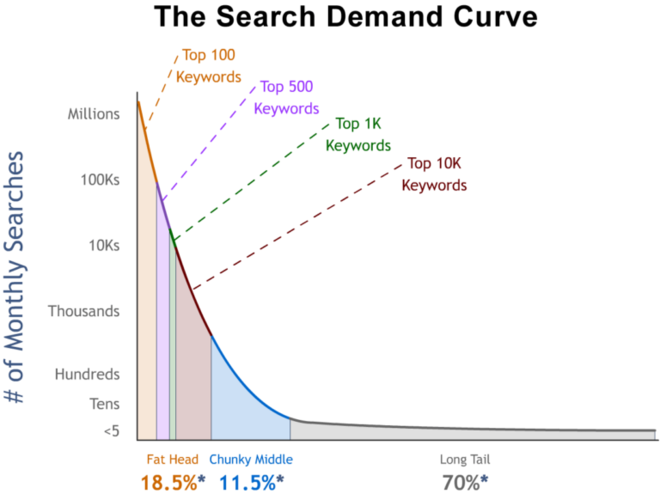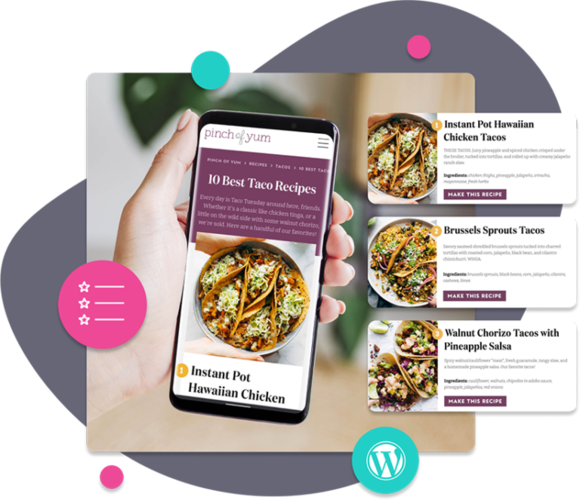Ever dreamt of capturing the cooking imaginations of the world?
To see your savory soufflé or divine chocolate ganache cake recipe go absolutely viral? Well, those dreams can come true once you learn to harness the power of SEO and keywords.
SEO (Search Engine Optimization for the uninitiated) is a powerful tool in your foodie arsenal. It's what helps your mouth-watering recipes pop up when someone is desperately Googling “easy dinner ideas,” “best chocolate cake,” or “healthy summer salads.”
Now, you may be thinking,
Sounds great! What's the challenge here? Where's the sour in this seemingly sweet deal?
Here's the rub: Unlike selecting the perfect blend of herbs for your pasta sauce, picking the right keywords for a food blog isn't an exact science.
But don't worry! Navigating the vast, ever-changing landscape of SEO and keywords is an enormous opportunity. Yes, it may seem intimidating, but once you get the hang of it, the rewards are satisfying.
So, let's get our hands dirty!
Understanding keywords
Keywords are SEO's secret sauce.
They piggyback on search engine algorithms to bring your content to those looking for it. So, you rank higher in search, and you get more organic traffic. Simple, right?
But, not all keywords are created equal.
Your high-volume keywords are everywhere, sought after, but more challenging to rank for due to competition. Examples include “best cake recipes” or “how to make a cherry pie.”
On the other end, you've got low-competition keywords.
They might attract a smaller crowd, but their scarcity makes them more valuable, with a better chance to rank high, and a surefire way to make your recipe blog posts stand out. You'll also hear them called “long-tail keywords,” and some examples would be “best cake recipes with five ingredients” or “how to make a cherry pie without an oven.”

So, let's recap:
- High volume keywords: High monthly searches, but also high competition. Tougher to rank for but potentially more rewarding.
- Low competition keywords: Less traffic, but also not a lot of competition. So it's easier to show up in the top search results.
The key here? Balance.
Mix a little of this and a little of that — high volume and low competition keywords alike — to perfect your SEO strategy. After all, what's a good recipe without some careful balance and a dash of diversity?
Keyword research tools
You don't just want to throw spaghetti at the wall and see what sticks.
You want to ensure that your delicious recipes are seen by the right audience. So, how do you find good keywords for your food blog?
First, let's cover Google's Keyword Planner
Consider Google Keyword Planner your sous-chef for keyword ideas – it's a free tool that should be in every blogger's toolbox. Here's a simple guide on how to use it:
- First, create a Google AdWords account if you don't have one, and log in.
- Next, hit the Tools icon on the left and go to Planning, then Keyword Planner.
- Then, click on Discover new keywords.
- Type your main recipe idea (for example, ‘healthy pasta') into the search field and click Get Results.
- Voila! You now have a list of related keywords, their search volumes, and their competition level.

But that's just one way you can start your recipe keyword search!
In fact, there are more tools out there for keyword research for food bloggers than there are kitchen utensils. Let's look at a few of them:
- Semrush: Want to know what other food blog keywords your competitors are using? Semrush is your friend.
- Ahrefs: This is another powerful tool for keyword research and competitor analysis.
- AnswerThePublic: Curious about what questions your audience asks about food and cooking? You'll find it on AnswerThePublic.

While most of these tools aren't free, they do give you a deeper look into keywords, your competitors' websites, and other key SEO tools. But it'll come with a learning curve.
Using these tools, though, you're well on your way to getting your recipes on Google Search.
Organizing and using keywords
You wouldn't go mixing your ingredients without thinking about how they go together, would you?
Well, you don't want to do that with your keywords, either. So it's time to start grouping them so you make the best use of your keywords.
Here are some things to consider:
- Relevance: Categorize your keywords based on their relevance to your recipe. For instance, “easy vegan pasta bake” differs greatly from “gluten-free desserts.”
- Search volume: Use your keyword tool to rank your list from high to low search volume. This lets you know which keywords have the most pull in the foodie community.
- Competition: Rank your keywords based on the competition level. Sometimes, less popular keywords have less competition, making them valuable in their own niche way.
Pro tip: A great way to group them by relevance is to use Google!
Open up an Incognito tab (this removes the data Google has on you that will influence the results) and search your target keyword. Now take note of the websites/articles in the search results.
Next, type a similar keyword.
Are the search results the same (or mostly the same)? Then it's a great idea to pair these keywords together in one article! Keep doing this for different keywords and grouping them by similarity.
This is Google's way of telling you that readers searching those terms are all searching for the same thing!
Incorporating Keywords
Now comes the fun part — making your recipe and including your keywords!
Here are some places to include your primary keyword in your recipe post:
- Title Tag: Your main keyword should go in your recipe's title. Always. This snippet of text is the first impression readers and search engines get of your post, so make it count!
- URL: Make sure your URL also includes the main keyword. This is like the address on the envelope that delivers your scrumptious recipe to the internet.
- Meta description: Search engines can choose their own, but it doesn't hurt to have a meta description including your keyword just in case.
- Headers: You can sprinkle secondary keywords throughout headers in your post. Give those subpoints and steps the flavor they need to stand out! But don't overdo it!
- Body Text: Use your main and secondary keywords naturally throughout the recipe's body text. Think of it like salt — too little, and it's bland; too much, and you ruin the dish.
- Image ALT Text: Don't forget to include your keywords in the image ALT text. After all, everyone knows we eat with our eyes first. (And it's great for accessibility reasons.)
The key here is to keep it natural.
You should always create content with readers in mind. Then worry about the SEO stuff afterward.
We also recommend the plugin Tasty Recipes, a WordPress recipe plugin, to help out.

It simplifies your recipe creation and is also search engine friendly. So you spend less time creating recipes on your website and spend more time actually making the recipes (and content!) for your food blog.
Check out a list of the best recipe plugins for WordPress to find more!
Other SEO best practices
Okay, so these tips aren't essential for finding keywords, but they definitely help!
Here are a few extra tips so your recipes reach the biggest audience:
- Backlinking: The more web pages link to your recipe, the more search engines will favor it. Think of it like a vote of confidence from other food blogs.
- Mobile optimization: Most people are dashing around their kitchen, reading your recipe on their phone. If it doesn't show up correctly, they'll leave your site. Think mobile-first.
- User experience: No one wants a recipe that's confusing or hard to navigate. And they don't want your site to be that way, either.
We know it can be overwhelming to learn all about food blog SEO.
Keyword research, website management, creating content — it all gets to be a bit much. But with practice and small adjustments, we know you can nail it!
Ready to find keywords for your food blog?
Alright, we're sure you're excited to start researching keywords! (You may have started while you were reading this post. If so, kudos to you!)
And these are just some of the ways food bloggers come up with recipes and keywords to match! (You also need to add a dash of creativity ?)
We hope this was helpful and that it'll get you started on the right track to improving your recipes. So, if it did, let us know in the comments! Also, share some of your best tips for finding keywords for cooking recipes to help other food bloggers!
And if you want more, check out our food blogging tips to help you grow even faster!

